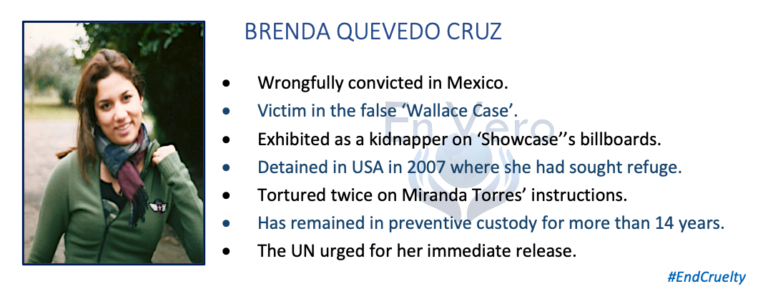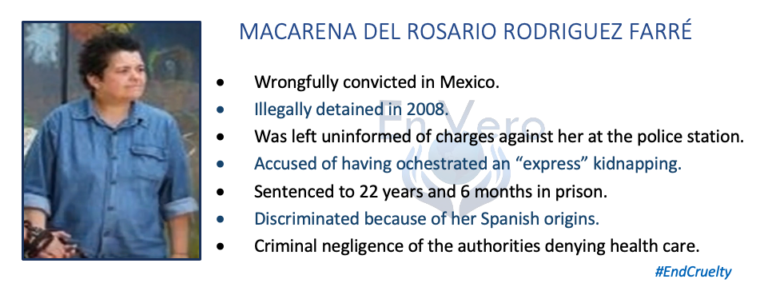Source: ProPublica
Author: Ginger Thompson
April 22, 2016
Mexican Human Rights Defenders Say They Are Target of Smear Campaign
On the eve of the release of a report investigating a student massacre in 2014, its authors and other human rights advocates fear an attempt to pre-empt the findings and discredit the work.
Last Saturday, I was surprised and somewhat alarmed when an email came in from one of Mexico’s most prominent human rights defenders. “Can we talk?” read the subject line. “It’s urgent.”
I immediately wrote back. Mariclaire Acosta is someone I’d known for years. She’s been in the trenches a long time, and doesn’t alarm easily. In her response, she explained that the government she once represented as a senior diplomat had turned against her. “Things are not looking good for the human rights community in Mexico,” she wrote. “We are all under serious attack.”
Attached to her email were copies of newspaper columns that smeared Acosta and her colleagues, characterizing the human rights community as a “mafia embedded in power” who had defrauded the government out of millions of dollars while advocating on behalf of traffickers and kidnappers. “How much of this money ended up in the pockets of these impassioned human rights defenders,” one column asked without citing any proof. Meanwhile, real crime victims barely receive enough government support to cover funeral costs, another column asserted.
I have reported from and about Mexico for decades. But these columns didn’t make sense to me. Acosta had been one of the earliest pioneers of human rights work in Mexico. I asked her who she thought was behind the campaign, and why she thought it had been launched now? “I’m told that it comes from the highest levels of the government, but I don’t have proof,” she said. As for why now, Acosta and others I’ve spoken to in recent days say they believe the media assault was triggered by the increasing international pressure on Mexico to address accusations that its military and police are responsible for gross human rights abuses.
This Sunday, an independent group of experts is expected to release the findings of its investigation into a 2014 attack on a caravan of buses loaded with students from a teacher’s college in the southern Mexican state of Guerrero that left three students dead and 43 others missing. The violence at Ayotzinapa shattered Mexican President Enrique Peña Nieto’s efforts to convince the world that government corruption and impunity were problems of the past. It emboldened the relatives of the tens of thousands of other people who have gone missing to come forward and file complaints — some against the country’s vaunted armed forces. And it has spawned massive protests across the country, led by the students’ families and friends.
When the group issued its initial report on Ayotzinapa last September, it hit the country like a bombshell. The report said that science and other evidence did not substantiate the government’s version of the incident, which blamed municipal police and drug traffickers for killing the students and incinerating their bodies in a trash dump. The experts said they had found evidence that federal police and military officers may have played a role. And they said that the gunmen may have targeted the caravan because the students unknowingly had boarded a bus loaded with heroin that belonged to a criminal gang known as “Guerreros Unidos.”
It’s unclear how much new light the widely awaited follow-up report will shed on the incident. Authorities close to the investigation said that the Mexican attorney general and the defense secretary blocked soldiers from being interviewed and refused to share any information that may have come from American authorities. (Though one human rights investigator let slip that more than half of the 113 or so suspects arrested in the case — whose testimony serve as the foundation for the government’s news reports out from Europe indicated that account — were found to have injuries consistent with torture). But the lack of cooperation alone could serve as a reminder of how badly Pena’s government has handled this case, raising more questions about how much the military has to hide and triggering more protests and international condemnations.
On the day I received Acosta’s email, Mexico’s defense secretary had been forced to issue a rare apology over a videotape which showed soldiers interrogating a female trafficking suspect by wrapping a plastic bag around her head until she nearly suffocated. Earlier this month, news reports out of Europe said President Peña was hounded by questions about Ayotzinapa during visits to Germany and Denmark, where one protester even tore off her shirt and shouted that he was a “dictator” and an “assassin.” Also earlier this month, in its annual report on human rights, the U.S. State Department described abuses by Mexico’s police and military as being among the country’s “most significant human rights-related problems,” saying that soldiers had committed crimes including “unlawful killings, torture, and disappearances.” Thus the release of the final report by the group of experts couldn’t come at a worse time. Which is why, according to human rights advocates I began calling in Mexico City and Washington, there’s a systematic effort underway to discredit the report before its release.
Maureen Meyer, an expert on Mexico at the Washington Office on Latin America (WOLA) called it a classic attempt to “kill the messenger.” In Mexico, the threat can be more than figurative. I recently spoke with a former Mexican official who said he didn’t think the smear campaign was being directed from the Mexican president’s office (a spokesperson there sent me a written statement pointing out that it was the Mexican government’s decision to invite the panel). But he said even a lesser authority ordering a minion to make life difficult for a critic — journalists are the most pressing example — can get out of hand.
The former official said, “Usually the order is something like, ‘Da les una calentadita,’” which literally translates as, “heat them up a little.” Then, he looked me in the eye. “You lived in Mexico a long time. You know what that means.”
The report’s five authors, whose previous work has led to widely acclaimed cases against the Colombian military, a former Guatemalan dictator and American oil companies, had been selected as part of an agreement between the Mexican government, the parents of the missing students and the InterAmerican Commission on Human Rights. Mexico’s foreign minister at the time said during a press conference when the panel began its work last year that it’s “support and suggestions will be welcome.” Since then, however, the experts have seen the Mexican media, conservative activists, and leftist politicians drag their backgrounds through the mud, making vague and totally unsubstantiated claims that they are not only unqualified for the task that brought them to Mexico, but also lacking the objectivity and moral standing to question Mexico’s police and military.
An article in the Mexican daily La Razon, for instance, accused Chilean lawyer and group member Francisco Cox of inappropriately charging Mexico thousands of dollars a month for his work on the Ayotzinapa case, while simultaneously defending victims of the Lord’s Resistance Army in Uganda for free. Numerous stories accused Colombia’s former attorney general, Angela Buitrago, of fabricating evidence against a Colombian colonel in support of group linked to the late Medellin cartel kingpin, Pablo Escobar. Another La Razon article said that Claudia Paz y Paz, who made history when she successfully brought genocide charges against Guatemala’s former dictator General Efrain Rios Montt, had been an agent of the guerilla insurgency during the country’s long and bloody civil war. By and large the articles I reviewed did not offer evidence to support the charges. A spokesperson for the group said that’s because the charges are “complete lies.”
In an interview, Paz y Paz told me that the group had asked the government to denounce the smear campaign. “They tried to minimize it, by saying that the attacks were coming from newspapers and journalists that no one reads, so it wasn’t worth a response.” Jose Miguel Vivanco, at Human Rights Watch, said the government’s silence is “glaring” and “sends a message that they condone” the attacks. “If this was some random thing that wasn’t worth worrying about, it would be easy for the government to refute it in categorical terms, and express full confidence in the investigation,” he said.
Vivanco pointed out that the work being done by the group marks the first time that Mexico has opened its justice system to the scrutiny of an international panel. Guatemala has recently gone even farther by allowing the United Nations to work alongside their own prosecutors on high profile corruption cases. One of its probes led ultimately to the arrest last September of the country’s sitting president, Otto Perez Molina. Joy Olson, WOLA’s executive director, said the Guatemala arrests, “scared the shit out of politicians all over the place.” And in Mexico, she said, the politicians are pushing back because the group of experts have demonstrated to a country where some 98 percent of all crimes go unresolved that “if you bring in an outside authority you might actually be able to get something done.”
I spoke to Ricardo Alemán, a columnist for the Mexican daily Milenio, who has written critically about the group and other human rights defenders, including Mariclaire Acosta. “I don’t campaign for anyone or anything,” he told me. “I do journalism.” However, just as the human rights community suspects that his work is part of a political smear campaign, he too thinks there is a political campaign at work, but to tarnish the reputations of the federal police and the military. The experts, he said, “came here to trick us and make us feel that they know better than we do how to conduct our affairs.” As an example, he pointed to the release of the videotaped torture of the trafficking suspect. “Do you think that release happened by coincidence? Things like that don’t happen by coincidence.”




